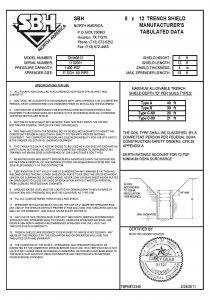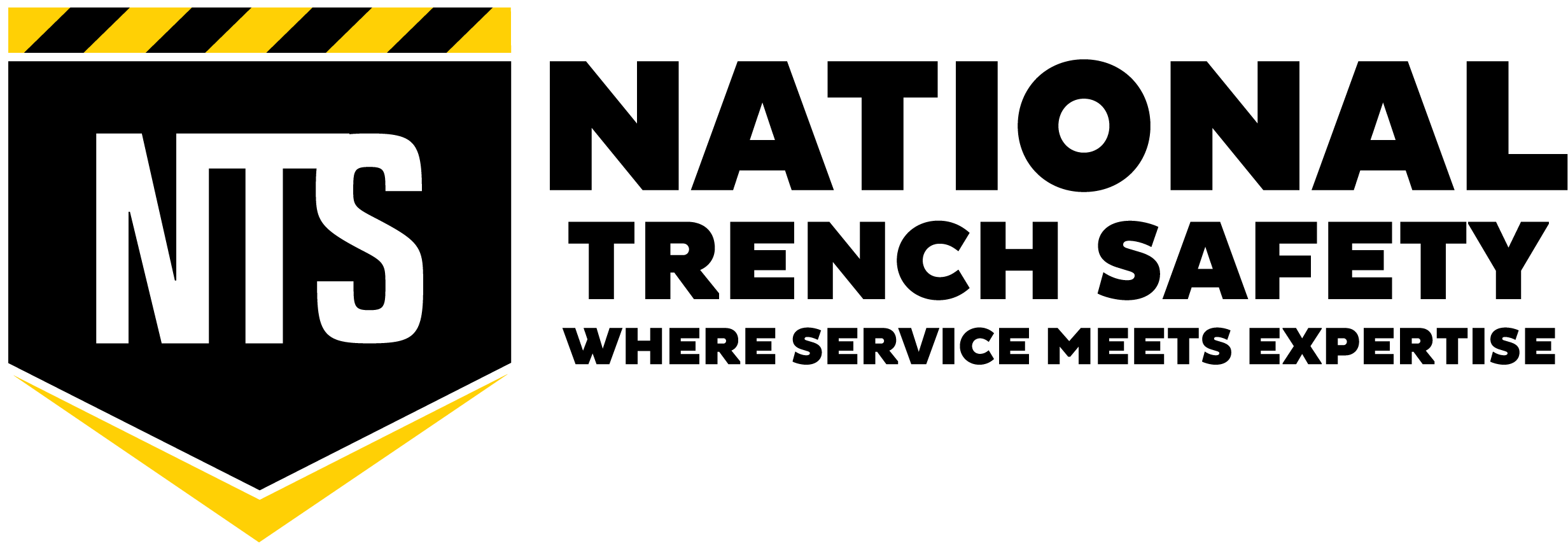Manufacturer’s Tabulated Data: Understanding the User’s Responsibility
This article is the second of a three part series regarding manufacturer’s tabulated data.
When reviewing the obligations of tabulated data there are certain requirements of the user of the tabulated data. Those requirements include the following:
- Employer’s Competent Person must determine the load that will be placed upon the shoring system, which include the pressure exerted by soil loading, water loading and surcharge loads.
- Soil loading is determined by engineers by analyzing soil bore logs and applying apparent earth pressure theories. Manufacturer’s tabulated data typically provides general parameters and corresponding soil loading for those parameters. The employer’s Competent Person can then interpret the chart in the manufacturer’s tabulated data along with the OSHA Appendix A to determine what is an acceptable load for the shoring system. In the event the load placed upon the system exceeds that outlined in manufacturer’s tabulated data, another shoring solution must be selected that conforms to the load requirements or an engineer may be consulted to determine if it is safe to extend the loading provided by the manufacturer’s tabulated data based upon job specific information.
- Water loading is not commonly included in manufacturer’s tabulated data, and when included it would specifically be stated that water loading is included in the loading calculations. When water is present, the Competent Person has the option to dewater the excavation using pumps or other similar alternatives to the bottom of the excavation and to maintain that dewatering while the shoring system is in the ground or to consult an engineer as in the scenario above to determine if the shoring system can properly address the presence of water and the additional loading.
- Surcharge loading addresses adjacent structures and spoil piles. Minimum setbacks are stated in the manufacturer’s tabulated data as well as normal surcharge loads, which generally includes equipment weighing less than 20,000 lbs. As larger equipment is used the impact upon surcharge load can be mitigated by setting the location of the equipment back further from the excavation. The Competent Person must also investigate surcharge loads imposed by adjacent structures, including foundations, trees, tanks, roadways, railways, etc.
- Employer’s Competent Person must determine the proper size and type of rigging equipment and apply that to safe handling procedures for lifting the equipment.
- As is implied from the references above, there must be a Competent Person at the site where the equipment is being used. A Competent Person for the purpose of excavation safety is someone that:
- Has had training or instruction in the use and handling of equipment consisting of proper assembly and inspection of the elements, hazards associated with use, rigging and setting, moving and removing of shoring equipment, and
- Has an appropriate amount of experiencing working with the specific shoring equipment being utilized.
In summary, the user of the tabulated data must have the experience and education necessary to read and interpret the tabulated data. Assumptions should never be made regarding what is stated by tabulated data and if ambiguity exists, an employee should always consult a more senior employee of the Employer or contact a registered professional engineer for clarification.
About the Author: Joe Turner, P.E. serves as National Trench Safety’s Director of Engineering, Research and Product Development. Mr. Turner is one of the most recognized figures in the trench safety industry, having provided trench safety plans for the last 20 years. Among his many accomplishments, is the book Excavation Systems, Design, Planning and Safety, which was published by McGraw-Hill in 2008 and is still used today as a reference for many students and professionals regarding proper engineering techniques.
DISCLAIMER: the information contained in this article is provided for general and illustrative purposes only and is not to be considered Site Specific and or designated engineering for any project or work zone, nor is it to be used or consider to be tabulated data, technical data, advice and or counsel to be used on any jobsite. Each project is different and is the responsibility of the employer’s designated Competent Person to make decisions upon what systems and methods may be used in compliance with the federal and local regulations, manufactures tabulated data, engineered drawings and other plans.





